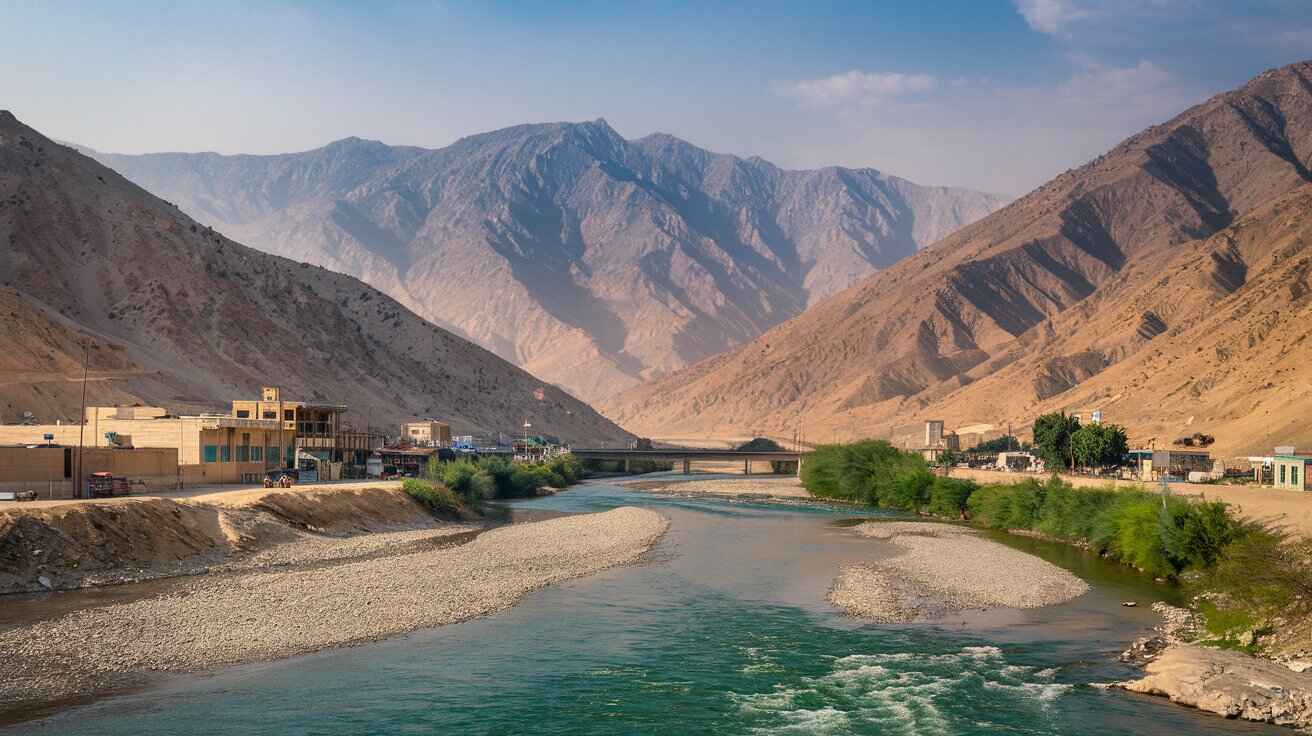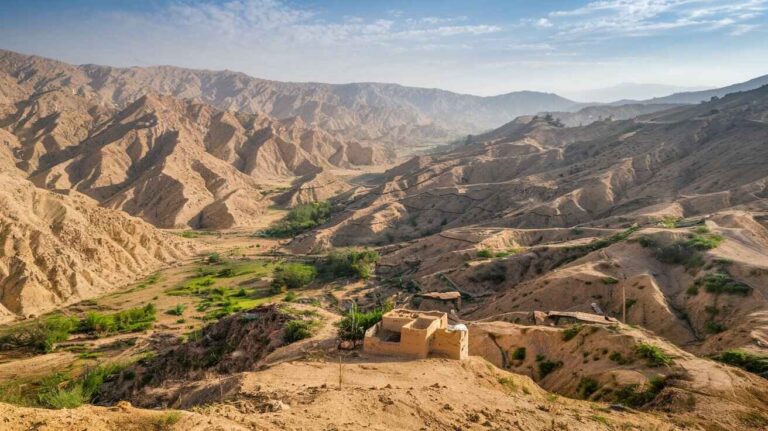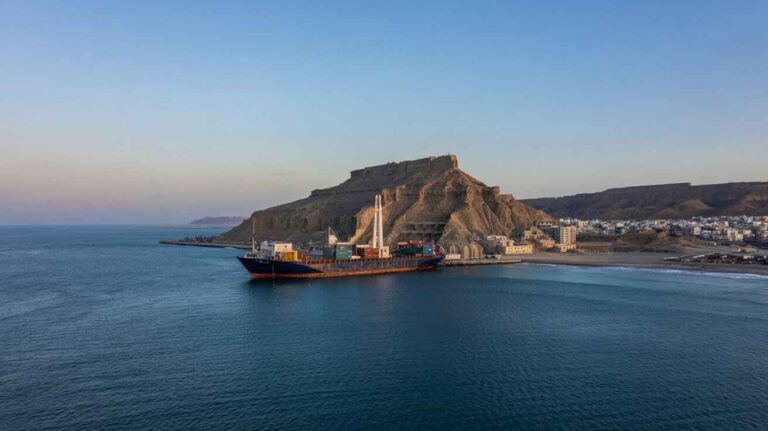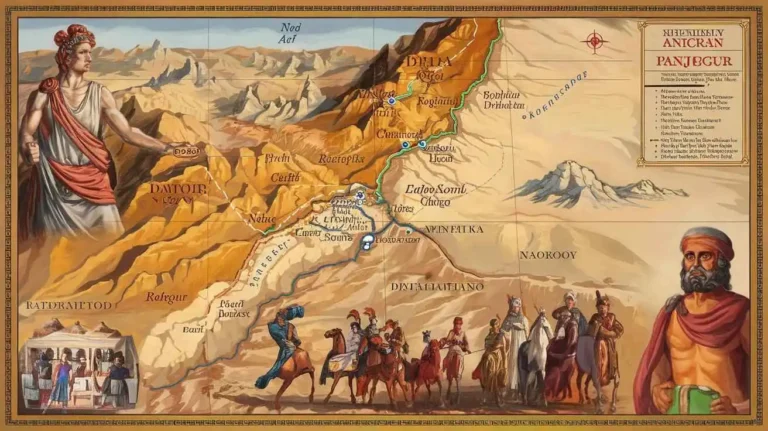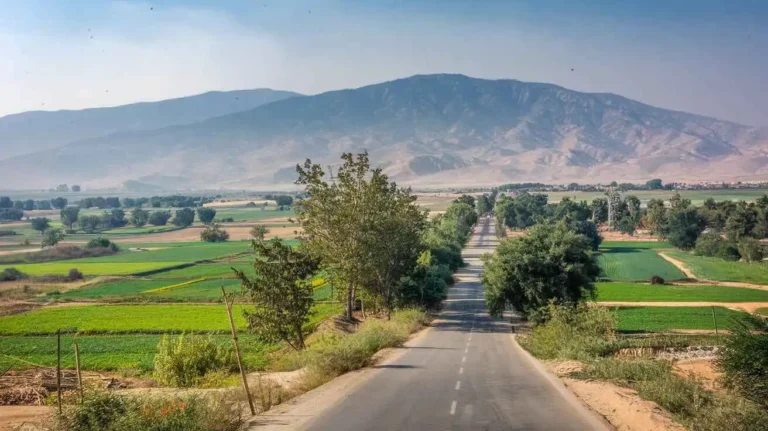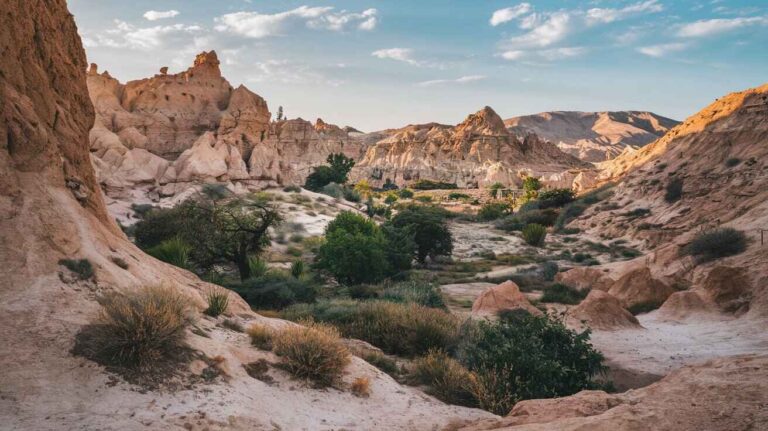Zhob: A Land of Untapped Potential
Zhob
Zhob is a region rich in history, culture, and economic potential. Situated in Balochistan, Pakistan, it holds a strategic position that connects major trade routes. The district, named after the Zhob River, has a history that dates back centuries. Its unique geography, diverse community, and growing infrastructure make it an ideal place for business, development, and sustainability.
With a growing population and an evolving economic landscape, Zhob presents several opportunities for investment, entrepreneurship, and infrastructure expansion. The region’s agriculture, livestock, and transportation sector are key contributors to its economy, offering untapped potential for growth and scalability. As marketing analysis continues to highlight Zhob’s strengths, business strategies can be developed to improve engagement, promotion, and economic outreach.
Economic Development & Business Potential
Zhob’s economic landscape is largely shaped by agriculture, livestock, and trade. The community relies heavily on farming, with wheat, barley, and mustard being major crops. Additionally, fruits such as apples, almonds, and apricots contribute significantly to the agriculture sector. However, business consulting and strategic planning can introduce more sustainable solutions for increasing productivity and market reach.
With proper execution, Zhob can leverage SEO, digital marketing, and advertising to attract clients and customers interested in organic produce and export-quality goods. Technology integration and automation in farming can enhance quality, increase efficiency, and improve supply chain management. Establishing an industrial zone in Zhob will also attract businesses, creating more employment opportunities and boosting economic influence.
Infrastructure & Connectivity
Zhob has a growing network of roads, with 627 km of black-topped roads and 916 km of shingle roads. However, optimization in transportation planning can enhance accessibility, benefiting both trade routes and local businesses. Improved connectivity would allow business expansion, ensuring better performance in the transportation and storage sectors.
Furthermore, the electricity infrastructure in Zhob is still underdeveloped, with only one grid station supplying power. Investment in renewable energy solutions, such as solar and wind power, can provide sustainable solutions for consistent power supply. Collaboration with energy firms and government agencies will be crucial in enhancing Zhob’s infrastructure.
Education & Workforce Development
The literacy rate in Zhob is 43%, with male literacy at 64% and female literacy at 18%. There is a need for education initiatives, training programs, and mentorship to enhance the skills of the local workforce. Leadership development, digital education, and vocational training can open doors for employment, ensuring that youth engagement leads to long-term progress.
A focus on education strategy can improve awareness, increasing community involvement in growth-oriented programs. Digital learning platforms, coaching opportunities, and technical skill-building programs will contribute to a more skilled workforce, promoting economic stability.
Role of Technology & Digital Transformation
With the rise of digital platforms, Zhob can benefit from technology-driven strategies to boost its business sector. SEO, algorithm optimization, and digital outreach can help local businesses reach a wider audience. E-commerce platforms can be introduced to sell regional products, ensuring increased revenue generation.
Investing in AI-powered tools for marketing, automation, and data analysis can enhance business efficiency. Machine learning can also improve customer insights, helping businesses optimize their products and services for better performance and conversion rates.
Agriculture & Sustainability
Zhob’s agriculture sector holds immense potential for sustainable development. Through research, innovation, and modern farming techniques, crop yield can be increased while ensuring environmental sustainability. Water conservation, climate-resilient crops, and organic farming solutions can help farmers achieve better productivity.
Marketing strategies tailored to highlight Zhob’s organic produce can increase global demand. Collaboration with agriculture experts, scientists, and research organizations will bring valuable insights for growth-oriented solutions.
Branding & Tourism Potential
Zhob’s cultural heritage, scenic landscapes, and historic sites make it an ideal location for tourism development. Branding Zhob as a travel destination can boost local businesses, create job opportunities, and promote economic engagement.
Strategic planning in tourism marketing, content creation, and social media outreach can help position Zhob as a must-visit location. Visual storytelling, video marketing, and blogging can showcase its rich traditions, attracting domestic and international tourists.
Zhob is a significant district situated in Pakistan, extending between 67° 48′ 41″ and 69° 44′ 43″ east longitudes, and 30° 26′ 54″ to 31° 57′ 8″ north latitudes. This region is bounded by Afghanistan in the west, while the south connects to Waziristan Agency, part of FATA. To the east, it shares a tribal area adjoining Dera Ismail Khan in Khyber Pakhtunkhwa. The Musakhel region lies in the south, with southwest neighboring Loralai and Killa Saifullah. The River Zhob originates from the east of Pishin Valley, flowing through the town before joining the Gomal River at Khajuri Kach.
The name Zhob comes from Pushto, meaning oozing water, in reference to the many springs that serve as the primary source of water in the region. Historically, this area was known as Fort Sandeman, named after Sir Robert Sandeman, who was an Agent to the Governor-General of Balochistan during the British Colonial period. The name Zhob was acquired in 1975, reflecting its deep-rooted historical and geographical importance.
Zhob District at a Glance
The Headquarters of Zhob District is Zhob Town. The population stands at 310,544 persons, spread across an area of 15,497 km², with a density of persons per km². The growth rate is recorded at 2.5%, with males making up 54.2% and females comprising 45.8% of the total population. The urban segment is 14.9%.
The district has two tehsils, namely Kakar Khurasan and Islamyar Nasirabad, while the main localities include Ganj Mohallah, Sheikhan, Apozai, Mina Bazar, Babar, Qamardin, Shaghalo, and Mughalkot.
The literacy rate is at 43.0%, with males achieving 64.0%, while females remain significantly lower at 18.0%. Economic activity is primarily focused on community, social, and personal services (32.3%), agriculture, livestock breeding, and fishing (30.3%), construction (13.3%), wholesale, retail, hotel, and restaurant businesses (9.6%), electricity, gas, and water supply (8.4%), and transport, communication, and storage (4.5%).
Agricultural and Natural Resources
Agriculture remains the backbone of the district. The major crops include wheat, barley, rapeseed, mustard, jowar, maize, moong, maash, cumin, tobacco, and fodder. Among fruits, apples, almonds, apricots, grapes, peaches, pomegranates, plums, watermelon, musk melon, sarda, and garma are commonly cultivated. The vegetables grown include onions, potatoes, tomatoes, okra, tinda, radish, spinach, turnip, cabbage, carrot, pumpkin, cauliflower, peas, brinjal, chilies, and garlic.
The forest area covers 5,698 hectares, consisting of Shang, Blue Scrub, wild Indian reed, devil’s Fastuosa, olive coagulans, evergreen khatol, draba, feather gangu, gurgura, and other plant species. The dominant tree species include Pistacia, Fraxinus, indigenous common acacia, Periploca, and Olea.
Topography of Zhob District
The topography consists of mountains and hills intersected in the south by a broad valley formed by the Zhob River and its tributaries. In the north, smaller rivers like Kundar and Toba Kakar define the northwestern boundary with Afghanistan. The Suleiman Range extends across the district, with Takht-e-Suleiman (Solomon’s Throne), at 3,441 meters, standing as the highest peak outside the current boundaries. The subsidiary peaks include Shinghar (2,826m), Torghar (2,291m), Charkundai (2,673m), Surghar, Speraghar, Tswarlas-guna (2,482m), Zhweghar, and Shintsak.
Two distinct mountainous regions exist, each having unique characteristics, with a succession of parallel ridges running from northeast to southwest, dividing the drainage of the Bori alluvial plain. Other key features include Chari Mehtarzai watershed, Haiderzai, and Ismailzai, where minor cultivations exist within Girdao.
Rivers, Streams, and Lakes
Several rivers, streams, and lakes define Zhob’s hydrology. The Baskan River flows from the Kan Mehtarzai Range, spanning 410 km. The Kundar River and Sakir Stream flow to the northeast, while the Gomal River courses through northeastern Pakistan. The Wali Murgha stream moves northeast, connecting to Surab, which extends 70 km. Other streams include Sawar (4 km), Chukhan, Sri Toi, and Bahlol Khwar. The drainage system passes through Afghanistan, covering 112 km before re-entering Pakistan.
Climate and Seismic Activity
Zhob experiences a cold climate, with hot summers and harsh winters. The temperature in January can drop to -1°C, while in May, it reaches 37°C. Summers are characterized by winds, dust storms, and occasional thunderstorms, while winter sees moderate rainfall with an annual precipitation of 285 mm. The coldest recorded temperature was -1°C, and the hottest was 37°C.
Zhob falls under seismic activity Zone 3, indicating moderate to severe earthquakes, which have historically caused damage in some areas.
Population and Language
The 2017 Census recorded a population of 310,544 in Zhob Tehsil, with urban numbers at 39,823, while the rural population remains dominant. The growth rate is 2.52%. The male population is 54.2%, and female is 45.8%.
The primary languages spoken in Zhob are Pushto (95.6%), followed by Balochi (0.2%), Punjabi (1.8%), Seraiki (1.8%), Urdu (0.4%), and Sindhi (0.1%). Minority religions include Muslims (99.3%), Hindus (0.1%), Christians, and Ahmadis.
Economic Infrastructure
Zhob has limited industrial zones, with no major industries. Household size averages 8 persons per house. Piped water reaches 18.1% of homes, while electricity access is 34.8%. The Quetta Electric Supply Company (QESCO) manages one 132 KV grid station.
The district lacks a railway system but has Zhob Airport, though it is non-operational for commercial flights. Road infrastructure includes 627 km of black-topped roads and 916 km of shingle roads.
Zhob is a place of history, nature, and potential, yet it faces challenges that need to be addressed for sustainable development.
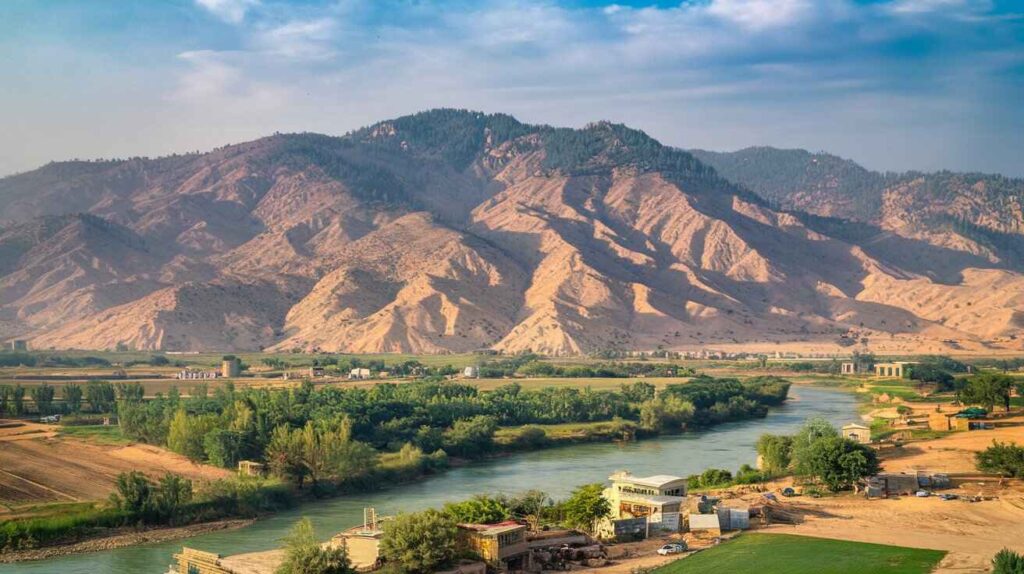
Beautiful Places in Zhob
1. Shinghar Valley
Shinghar Valley is one of the most picturesque locations in Zhob, surrounded by majestic mountains and lush greenery. The valley is known for its fresh air, serene environment, and natural beauty, making it a perfect getaway for nature lovers. In spring and summer, the valley blooms with colorful flowers and provides a refreshing escape from the city’s hustle and bustle. Travelers often visit Shinghar Valley to enjoy its breathtaking landscapes, making it a hidden gem in Balochistan.
2. Silyazzai Dam
Silyazzai Dam is a vital water reservoir in Zhob that not only serves agricultural purposes but also offers a scenic landscape. The dam is surrounded by rocky hills and is an excellent location for picnics and relaxation. The reflection of the sky in the calm waters creates a mesmerizing view, especially during sunrise and sunset. Many locals and visitors come here to enjoy the peaceful surroundings and the cool breeze.
3. Zhob River
Zhob River is the lifeline of the district, flowing through the region and supporting local agriculture and wildlife. The river enhances the scenic beauty of Zhob, providing stunning views along its banks. It plays a significant role in the region’s ecosystem and is often visited by people who appreciate nature’s tranquility.
4. Sperangah (Sperragha) Hills
The Sperangah Hills are a rugged yet stunning mountain range in Zhob. These hills are a favorite spot for adventure seekers and hikers who enjoy breathtaking panoramic views. The hills also hold cultural and historical significance as they have been part of the region’s tribal heritage for centuries.
5. Khawaja Khizar Tomb
The Khawaja Khizar Tomb is an important spiritual and historical site in Zhob. It is believed to be the resting place of a revered Islamic figure, attracting visitors who seek blessings and historical insights. The tomb’s architecture and surrounding landscape add to its spiritual aura, making it a significant landmark in the region.
6. Gondoi (Gundai) Valley
Gondoi Valley is a beautiful and fertile area with green fields and a refreshing climate. It is an ideal place for those who appreciate natural beauty and want to experience the rural charm of Zhob. The valley is known for its agricultural productivity and is a great spot for photography and nature walks.
7. Fort Sandeman
Fort Sandeman, a historical British-era fort, stands as a reminder of Zhob’s colonial past. Built during the British rule, the fort was strategically important for controlling the region. Today, it serves as a historical landmark that provides insights into the military and administrative history of the area.
8. Torghar (Kala Pahar)
Torghar, also known as Black Mountain, is a striking geological formation in Zhob. The dark rocky appearance of the mountain gives it a unique and mysterious look. It is a popular destination for those interested in mountain landscapes and geological exploration.
9. Kharanai and Surangai Valleys
These valleys are known for their lush fields, scenic landscapes, and peaceful environment. The beauty of these valleys lies in their simplicity, with vast open spaces, fresh air, and a slow-paced lifestyle that provides a perfect retreat from the busy city life.
Famous Personalities of Zhob
1. Sardar Abdul Rahim Mandokhail
Sardar Abdul Rahim Mandokhail was a respected political leader from Zhob who played a key role in the region’s development. His efforts in improving education, infrastructure, and tribal harmony earned him great respect. He worked tirelessly to uplift the local communities and was known for his strong leadership qualities.
2. Maulana Mufti Mehmood
Maulana Mufti Mehmood was a renowned Islamic scholar and politician from Zhob. He played an influential role in religious and political affairs, advocating for the rights of the people. His deep understanding of Islamic teachings and commitment to public service made him a highly respected figure in Pakistan’s history.
3. Maulana Muhammad Khan Sherani
A well-known scholar and politician, Maulana Muhammad Khan Sherani has made significant contributions to Islamic education and politics. His leadership and advocacy for religious and political matters have had a lasting impact on the people of Zhob and beyond.
4. Sardar Kakar Leaders
The Kakar tribal leaders of Zhob have historically played a crucial role in maintaining peace and unity among the tribes. Their leadership has been instrumental in preserving the cultural heritage and traditions of the region.
5. Qazi Muhammad Essa
Qazi Muhammad Essa was a prominent political leader and freedom fighter who played a significant role in the independence movement of Pakistan. He was known for his dedication to the cause of a free and independent Pakistan, and his contributions are remembered with great respect.
6. Sardar Noor Mohammad Khan Mandokhail
Sardar Noor Mohammad Khan Mandokhail was a prominent tribal chief known for his wisdom and leadership. He was a key figure in tribal affairs and worked to promote peace and development in the region.
7. Sarfraz Bugti
Sarfraz Bugti, a politician and former minister, has contributed to Balochistan’s political landscape. He has been involved in governance and security affairs, playing a vital role in shaping policies for the province.
8. Dr. Shahbaz Kakar
Dr. Shahbaz Kakar is a well-known medical professional and social activist from Zhob. His contributions to healthcare and community welfare have earned him recognition and respect.
9. Mir Sadiq Ali Khan
Mir Sadiq Ali Khan was a historical figure who played a role in the region’s political and cultural development. His contributions to the governance and leadership of Zhob have left a lasting impact.
10. Young Emerging Leaders
Zhob is now home to several young professionals, writers, and digital entrepreneurs who are making a name for themselves in various fields. These individuals represent the new face of Zhob, contributing to education, business, and technology.
Zhob: A Land of Rich History and Cultural Heritage
The Journey Through Time: History of Zhob
The history of Zhob is a fascinating tale of ancient civilizations, powerful rulers, and strategic battles. Located in Balochistan, Zhob has been a significant region for centuries, witnessing the rise and fall of great empires.
In 629 AD, the famous Chinese traveler Xuanzang passed through the region while documenting his journey. His travel records, known as Records of the Western Regions, provide valuable insights into the region’s past. He mentioned the Pashtuns, the dominant ethnic group in Zhob, and their deep-rooted traditions.
During the Mongol invasions, Genghis Khan and his forces brought destruction to many regions, including parts of present-day Pakistan and Afghanistan. In 1398, Pir Muhammad, the grandson of Amir Timur, led an expedition that left an impact on Zhob. The region had several forts, mounds, and karizes that were influenced by various ruling dynasties.
The Mughals ruled the Indian subcontinent for centuries, but Zhob remained a contested region. In 1736, the Persian conqueror Nadir Shah expanded his rule over the area. However, his rule was short-lived as Ahmed Shah Abdali established the Durrani Empire in 1747, making Balochistan an essential part of his dominion. His rule continued until 1773, after which the Barakzais took control.
The British later became involved in the region, aiming to establish protection over strategic locations. In the 18th century, they granted a sanad to local leaders, allowing them to govern under British influence. Key tribal figures such as Bekar Nika, Jogi, and the Jogizai family played crucial roles in the region’s affairs.
By the late 19th century, the British fully integrated Zhob into their administrative structure. The Zhob Valley Expedition of 1884 was a significant military campaign aimed at securing the Gomal Pass. In 1889, the British Government formally established Fort Sandeman, named after Sir Robert Sandeman.
In 1890, Zhob was declared a district, marking a new phase in its history. The 1901 census recorded a population of 3,552. The British established a military garrison with native cavalry, infantry regiments, and the Zhob Levy Corps in 1894. This move strengthened their control over the region.
The Saliaza Valley was an important area for irrigation, supporting fruits and providing drinking water to the local population. British records mention financial investments such as lakhs of rupees spent on development. The colonial political agent managed the region, overseeing projects such as the construction of a castle standing 150 feet above the plain.
British influence led to the establishment of a bazaar, dispensaries, schools, and even a railway system connecting Harnai to Zhob. The railway stretched 168 miles (270 km), linking trade routes to Bhakkar, Dera Ismail Khan, and other key locations. The road network also measured 122 miles (196 km).
By 1890, funds were allocated for development, with an income of 18,000 rupees and an expenditure of 17,000 rupees, primarily funded through octroi collections.
The British also established a military sanitarium at an elevation of 8,500 feet (2,600 m) near Shinghar in the Sulaiman Mountains. The area became a summer retreat for British officials, similar to other hill stations in Pakistan.
The Cultural and Ethnic Tapestry of Zhob
The Pashtuns of Zhob belong to various tribes and clans, with a history stretching back centuries. The region has been home to both nomadic and semi-nomadic communities that migrated between Pakistan and Afghanistan. Prominent tribal groups include the Yusafzai, Tarakai, Mehsud, and Wazir.
Historically, Zhob was influenced by Buddhism, and ancient Sanskrit scriptures discovered in the region indicate strong cultural ties to Nalanda University in India. The Buddhist scholar Śīlabhadra, who taught Emperor Taizong, might have had connections to these lands. The famous Chinese novel Journey to the West, written by Wu Cheng’en during the Ming dynasty, was inspired by the travels of Xuanzang, further highlighting the historical significance of Zhob.
The Pashto language has remained the dominant tongue in Zhob, spoken by Pakhtuns (Pathans) and other Iranian ethnic groups in Pakistan and Afghanistan. Other languages such as Dari, Urdu, and Hindi are also spoken, though to a lesser extent. The Pashtun population worldwide is estimated to be between 60 to 70 million, with 15 million residing in Pakistan.
Historians such as Shahid Javed Burki, Tim Willasey-Wilsey, and Abubakar Siddique have studied the Pashtun influence on regional politics and conflicts. The 1979 census provided data on tribes, population, and urban communities, showing that Pashtuns make up 18.24% of Pakistan’s population and 47% of Afghanistan’s population.
Migration patterns have taken Pashtuns from Zhob to Rohilkhand, Delhi, Mumbai, Karachi, and Islamabad, shaping the region’s urban communities, which now make up 20% of the local population.
The Role of Zhob in Military Campaigns
Historically, Zhob played a key role in military conflicts. The Durrani Empire, founded by Ahmad Shah Durrani (Ahmad Shah Abdali) in 1747, launched military campaigns across India, Khorasan, and Afghan Turkestan. Earlier rulers like Mahmud of Ghazni, Babur, and Nader Shah had also left their mark on the region.
Famous historians like Hari Ram Gupta documented these events, shedding light on figures such as Ahmad Khan Abdali (Ahmad Shah Baba). Born in 1720, he rose to power in 1722, ruling territories from Herat and Multan to Shindand and Farah. He defeated adversaries like Zaman Khan and Zulfiqar Khan, reclaiming Kandahar from Hussain Hotak in 1721.
Under the Afsharid dynasty, Nader Shah appointed Ahmad Shah as a military officer in 1739 before his conquest of Delhi and Hyderabad. Legends speak of a physiognomy prophecy foretelling Ahmad Shah’s future as a king. His military campaigns also involved the Ottomans, deploying contingents of 3,000 to 4,000 troops.
Zhob’s Development Under British Rule
During the British era, Zhob was strategically developed as a center of administration and military operations. The British Government saw Zhob Valley as a crucial entry point through the Gomal Pass. They built Fort Sandeman in Apozai to maintain control over local tribes.
British officers like Sir Robert Sandeman played a pivotal role in governance. By 1901, Zhob had a well-established military garrison with the Zhob Levy Corps stationed nearby. The region had a steady income of 18,000 rupees, with annual expenditures of 17,000 rupees, ensuring continued development.
Zhob’s importance continued into modern times, serving as a Pakistan Army cantonment and a center for regional administration. The town remains a hub for semi-nomadic migration between Pakistan and Afghanistan, preserving its historical identity while adapting to modern developments.
Challenges & Future Prospects
Despite its potential, Zhob faces challenges in infrastructure, education, and business expansion. However, with resilience, hard work, and dedication, Zhob’s community can overcome these obstacles. Government support, private investments, and strategic development initiatives will be key to unlocking Zhob’s true potential.
Zhob is a region filled with opportunity, growth potential, and business prospects. Through strategic execution, digital transformation, and community collaboration, the district can achieve economic success, enhance visibility, and establish itself as a leading hub for business, agriculture, and tourism. With commitment, passion, and a clear vision, Zhob can become a model for regional development in Pakistan.

